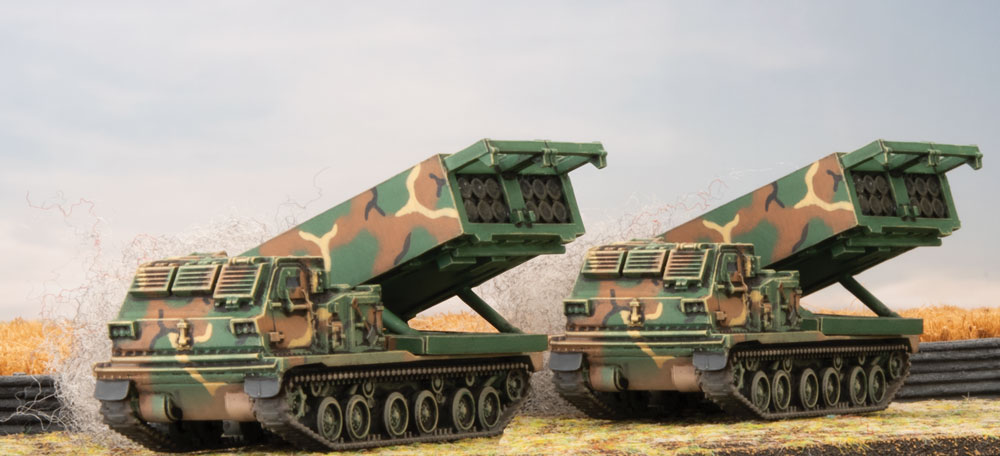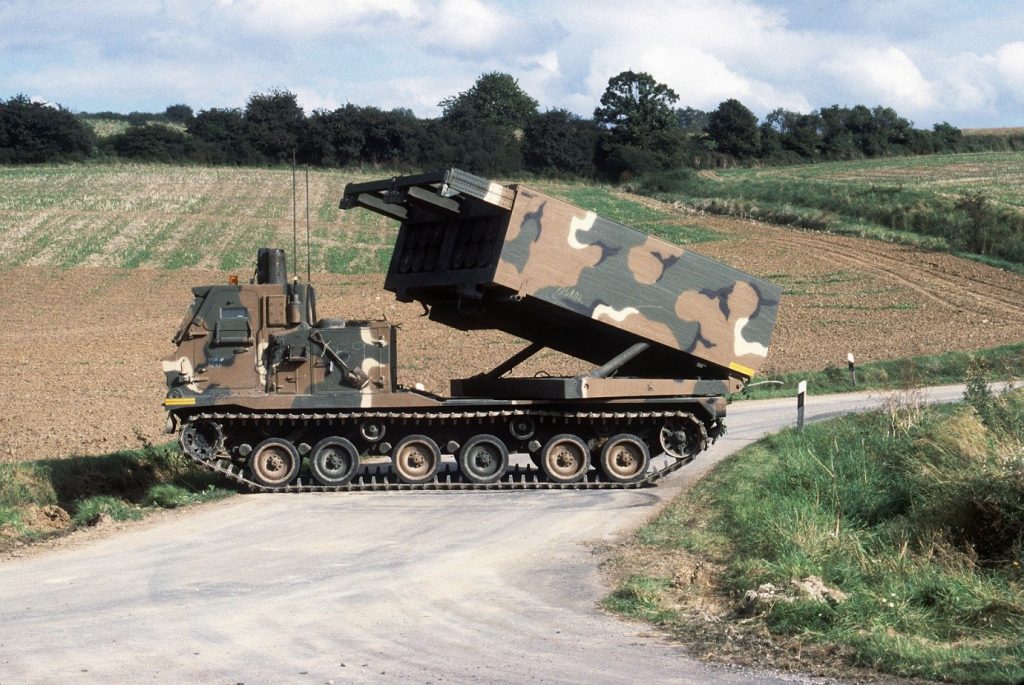We asked people on our Facebook Group to submit questions for a Q&A session with Phil (writer of the D-Day: SS book) and Chris (knows lots of things about what is going on round the company) with the intent of recording a fun video for you to watch. Unfortunately like any good plan, it didn’t plan on a devious and cunning adversary (COVID-19) staging a guerilla campaign and putting Auckland (the home of the Design Team) back under a lockdown. Instead we tied Phil to a chair and got him to answer these questions before he could return to his bunker (or fortress of mathematical calculations)…
General Questions

John Rick: How would you best describe the difference between the two different books for the Germans. What are the pros and cons of each? What are some general strategies for both?
Phil – That’s a big question! The D-Day: German book covers a wide variety of troops from the unenthusiastic Beach Defence Grenadiers to the elite Fallschirmjäger paratroopers, with the veteran panzer troops in the middle. And then, the command cards increase the variety even further.
The D-Day: Waffen-SS book is more focussed, just covering the SS-Panzer divisions, although once again, the command cards create a lot of variety. By and large though, most of the SS-Panzer divisions were in the middle of either building up for the first time or rebuilding after destructive combat on the Eastern Front. This means that their level of training is more on the level of the Beach Grenadiers than the fully-trained army Panzer divisions, but at the same time, their high level of motivation is similar to the Fallschirmjäger paratroopers.
The pros of this are that you get some really excellent kit with great morale ratings for a good points break. The cons are that the less experienced and still partly-trained Waffen-SS are hit on 3+ like green American units. The best strategy to handle this, for both the Americans and the Waffen-SS, is an aggressive approach to battle. Make use of your initially higher strength to gain the upper hand early, and keep pounding the enemy so hard that they can’t exploit your weaknesses, while focussing on taking the objectives as quickly as possible – pretty much what you’d expect from the SS really!
James MacMillan: Did the playtesting focus on the SS alone, or was the interaction of the D-Day: German and D-Day: Waffen-SS book a large part of the process?
Phil – While you can mix and match between the two books, I think most players are going to focus on one play style or the other. So, yes, some playtesting was done using mixed forces, but mostly players were looking to exploit the differences from the D-Day: German book.
Mark Feris: When is this going to be on Forces and in the Android bookstore?
Chris: By the time you read this answer, it will be up on both.
Ryan Gale: Which formation is your personal favourite?
Phil – Well at the moment I’m exploring Panthers, both the army and Waffen-SS varieties. I’m still undecided as to which I like better. Having a few more tanks with the SS is great, but when things go wrong, they can go badly wrong, whereas the better-trained army Panthers have greater resilience and come back from setbacks more easily.
Chris – I would leave this to just Phil to answer, but I like my time in the spotlight too…. Tigers. Tigers. More Tigers. And maybe… Tigers. Plus I’d love to do a Sd Kfz 250 based force of armoured cars and infantry but that is definitely future Chris’ problem!
Units and Models in the Book
Oscar Mardones Schopflin and Petter Therén: Could we expect some new SS miniatures in Bagration: German or Bulge?
Chris – we have a new range of figures coming out as part of D-Day: Waffen-SS, designed by our talented sculptor Ales. These will be coming out in our new Thermoplastic.
We are still nailing down a few of the finer points about what you can expect to see with the later books.
Nicholas Roche: Any careful formations? Or are they all aggressive (don’t-know-how-to-take-cover-stupid)?
Phil – The Waffen-SS are far from ‘don’t know how to take cover stupid’. In fact, they are middle of the road Is Hit On 3+, like many other troops. both Allied and Axis. But yes, there are command cards for the excellent 9th Hohenstaufen SS-Panzer Division that improve their rating to Careful (Is Hit On 4+).
Jean-Baptiste Piron: Will the 16. SS-Panzergrenadierdivision ‘Reichsführer SS’ , get their “Italian” StuGs back ?
Phil – Who stole them? Let me know the details and I’ll investigate.
Dean Marquis: Did the SS have a mixture of StuG IV and Stug III
Phil – The StuG IV was used almost exclusively by infantry divisions. As such, the 17th Goetz Von Berlichingen SS-Panzergrenadier Division had them. The other SS divisions in Normandy that had StuGs all had StuG III.
The good news is that, since there is little difference between the two types, it doesn’t matter too much which model you use for them, the newer plastic StuG III or the old metal and resin StuG IV. However, if you really want to distinguish them, you could support your 17th SS infantry with a Jagdpanzer IV tank-destroyer unit rather than a StuG unit since both the Jagdpanzer IV and StuG IV were based on the same chassis and had similar performance.
Command Cards
Dan Neal: Of the new D-Day SS Title Cards, which do you think creates the most unusual or distinctive style of play? Maybe something that hasn’t really been available for German forces from D-Day and Fortress Europe?
Phil – Yes. Every SS Division that fought in Normandy (other than the baseline 12th Hitler Youth SS-Panzer Division) has their own command cards.
Gergő Tóth: Is there a chance to see the return of the Panzerwerfer-42? Maybe as a command card?
Phil – I’m sure that it is a distinct possibility in future books. Meanwhile, you can simply field them as Nebelwerfer rocket launcher batteries.
Luke Shagrid Hazley: Will there be any command cards to make an SS unit veteran/careful? And will we see leaders like Wittman/Barkmann return as direct only orders?
Phil – Yes. The command cards for the 9th Hohenstaufen SS-Panzer Division have them rated as essentially Fearless Veteran and Careful.
As for direct-only warrior models, all I can say is … Chris stop slacking!
In The Future
Bob Anderson: I’m really excited about the high level approach to reimagine the SS. Any chance you might revisit the SS units in Mid War with the same approach? Perhaps via a pamphlet?
Phil – I don’t believe that there’s any need to change the representation of the Waffen-SS in the Mid War books. The ratings in D-Day: Waffen-SS aren’t about the SS as a whole, but rather about the specific divisions that fought in Normandy, and the state they found themselves in when called upon to do so.
In 1942 and 1943, the handful of Waffen-SS Panzergrenadier divisions were some of the best divisions in the German armed forces. Determined, experienced, and well trained. However, those very qualities were what saw them thrown into battle almost continuously between early 1943 and D-Day and ground down to a nub. They were barely given time to start rebuilding when they were thrown back into combat in Normandy, with weeks of training rather than the months of training that the army divisions had benefited from.
Kevin Malvaez: Will we be seeing future books with SS from the other fronts/formations/options or do the command cards for this release have options for SS divisions outside of France/Normandy?
Phil – Given that Hitler relied increasingly on the Waffen-SS as the war progressed, even as their quality declined from insufficient time to train and integrate the replacements that this policy demanded, you can definitely expect to see new varieties of SS as the war continues.
Aleksandr Varyvoda: Will the book on the SS on the Eastern front be like the Gray Wolf in the last edition?
Phil – If you mean, will Bagration: German be an outstanding addition to every gamer’s library giving them new ways of fielding their Germans and new and exciting models, then it definitely will be like Gray Wolf, but even better. While it won’t focus on the Waffen-SS like this book (half of the Panzer divisions in Normandy were SS, while only two battered SS battlegroups were left on the Eastern Front), Wayne has a plan for it to definitely include some SS content between the book and the command cards.
Benjamin Thomas Alkærsig Christensen: Are there any plans for Hitlerjugend and Volkssturm in the future? Either as a list of their own (Bulge or Berlin books) or as command card upgrades/downgrades?
Phil – Most definitely. What would the Battle of Berlin be without the old men of the Volksturm and the young boys of the Hitler Youth?
Stuart Whigham: Will we be seeing SS Cavalry units, that can fight on horseback if need be?
Phil – Absolutely! They are Battlefront’s highest priority!
Chris – If this was a video like we initially planned you would see Phil’s “I may not be telling the truth” face right now…
Eric Deutsch: What are the current plans for 5th SS
Phil – You might have to wait and see there. Wayne’s been concocting some interesting ideas on how to build their battered veteran battlegroups.
Ben Fouche: No more kubel, motorcycle or schwimmwagen scouts?
Phil – All of the reconnaissance companies in Normandy were equipped with half-tracks, either the older Sd Kfz 251 or the neat little Sd Kfz 250 that has just been released. When we get the Eastern Front book, we’ll see reconnaissance units in these sorts of transports reappear.
Stuart Whigham: Will there be any SS Gebirgsjager units?
Phil – You’ll have to interrogate Wayne to learn the answer to that. I’m not sure you’ll get much out of him until he’s ready to talk though. He’s a tough nut to crack.
Nicholas Roche: Stuka zu fuss? 3.7mm AA halftracks?
Phil – You might have to join Stuart in his interrogation!
Helge Macintyre: Will we see SS or in other ways aggressive Sturmpanzers (Brummbar) with a lower price… as the present Price makes Them unplayable
Phil – The few Sturmpanzer units ever built were all army units, and during the middle of 1944, all of them were veterans of the fighting at Kursk, so the answer is definitely ‘not yet’.
Lee Werling: A lot of what I see here are “wish lists” to be brought back from V3. I hope you do! Freiwilligen SS was my favorite from Grey Wolf Revised.
Phil – Many of the really niche and specific forces in the older books probably won’t make it into future books in such a direct way. However, the flexibility of Version 4 usually allows you to build these forces out of the available components. I suspect that you can build something very similar to your old favourite from the D-Day: Waffen SS book and command cards.
Thanks to everyone that took the time to submit questions, hopefully the answers were enough for now to give you a sense of where we are going…


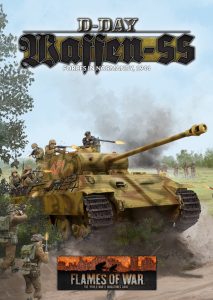

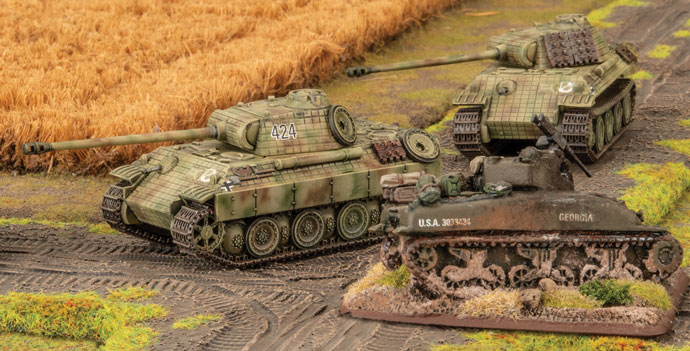

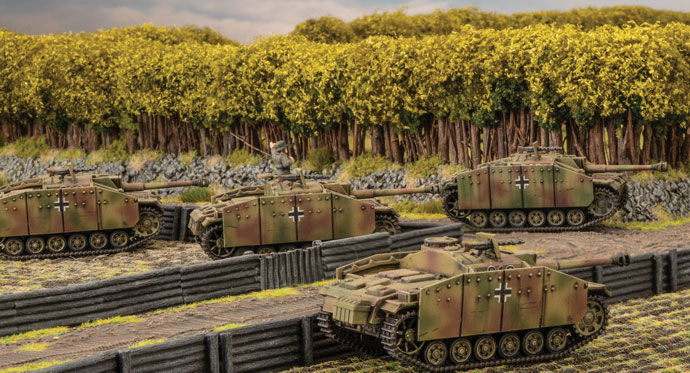
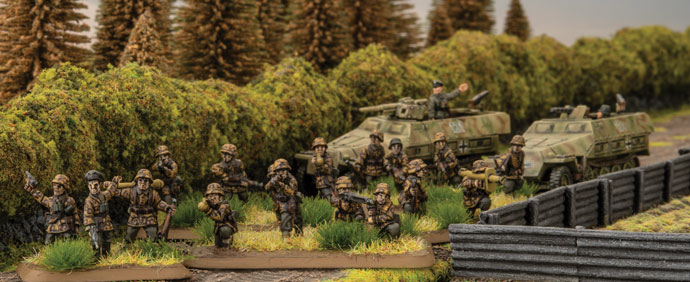
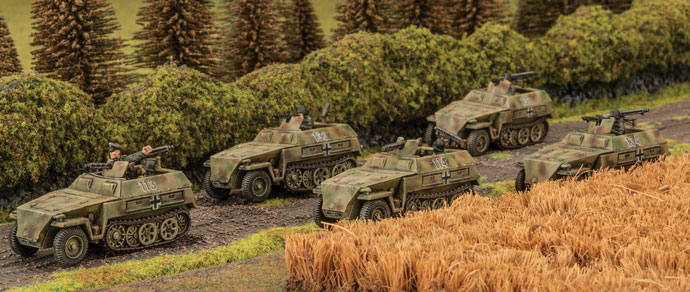

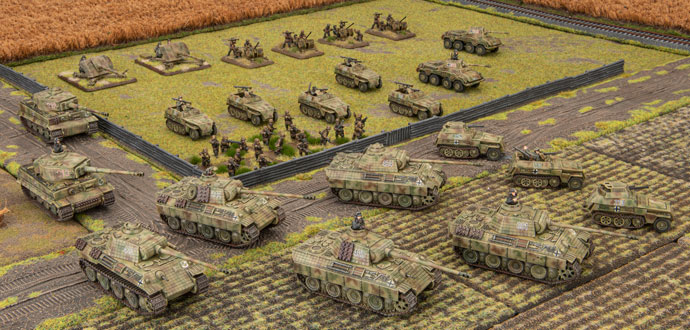
 Normandy Campaign Missions
Normandy Campaign Missions Who Are The Warriors
Who Are The Warriors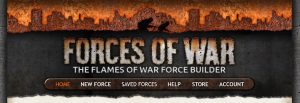
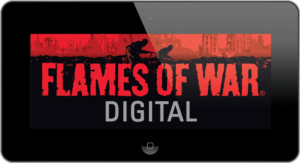
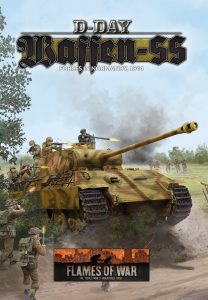

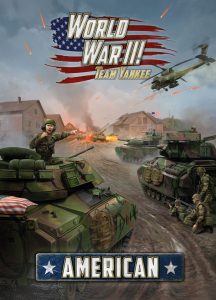
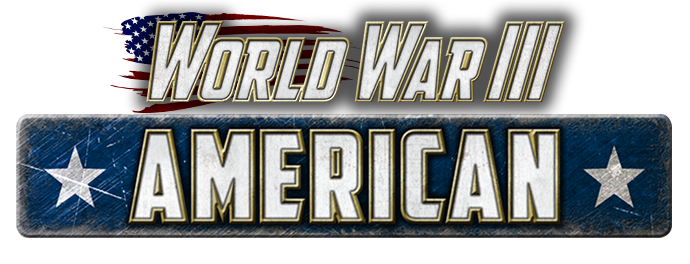
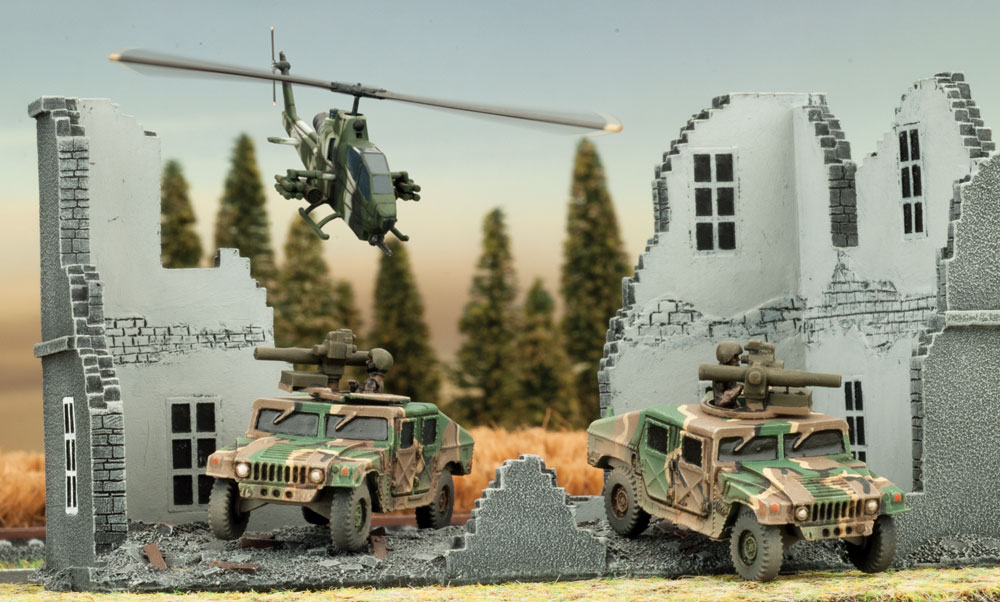
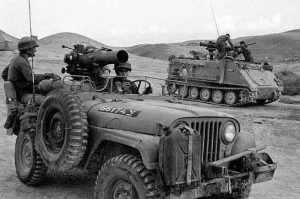 With AT21 and range 48”/120cm in game, the Improved TOW represents a threat to all but the most advanced tanks on the table and can account for anything up to Front Armour 18 reasonably in my experience. The first outing for the Improved TOW was in Lebanon in 1982 where IDF General Peled’s TOW jeeps exploited the vulnerabilities of Syrian T72’s in spectacular fashion. This action saw up to nine T72’s destroyed for no tank losses on the Israeli side.
With AT21 and range 48”/120cm in game, the Improved TOW represents a threat to all but the most advanced tanks on the table and can account for anything up to Front Armour 18 reasonably in my experience. The first outing for the Improved TOW was in Lebanon in 1982 where IDF General Peled’s TOW jeeps exploited the vulnerabilities of Syrian T72’s in spectacular fashion. This action saw up to nine T72’s destroyed for no tank losses on the Israeli side.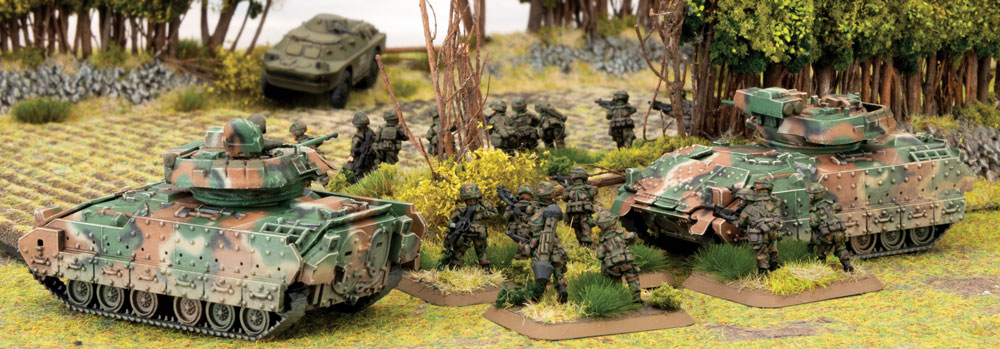
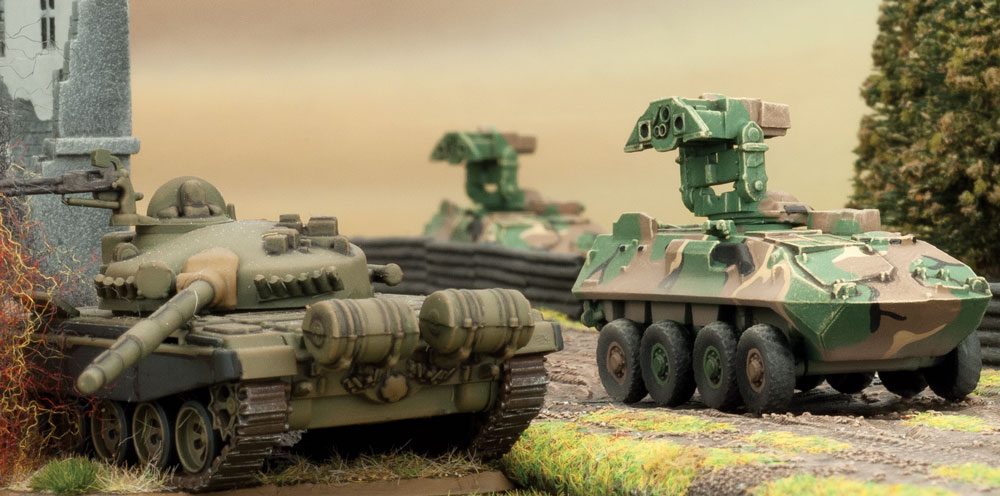
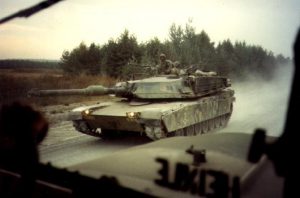 “Sergeant if you look at anyone else’s tanks they’re bare hulls, maybe a little kit in the bustle but our tanks, Sergeant there’s more kit on theses tanks than in the quartermasters shop, look at that one, does that tank have a DShK on it?
“Sergeant if you look at anyone else’s tanks they’re bare hulls, maybe a little kit in the bustle but our tanks, Sergeant there’s more kit on theses tanks than in the quartermasters shop, look at that one, does that tank have a DShK on it?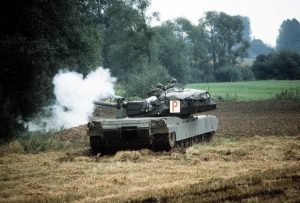 The Lt looked down, and then back at the tanks. “Sergeant, is that a case of beer on the back of that tank?”
The Lt looked down, and then back at the tanks. “Sergeant, is that a case of beer on the back of that tank?” 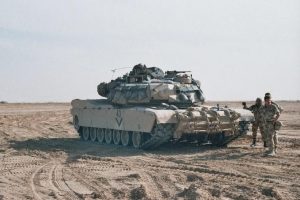 All you need to do is type in Abrams in google and you’ll find pages upon pages of pictures of Abrams tanks through the years, and every single one looks different. But the pictures give great inspiration for stowage, paintjobs and just getting the models on the table. I tried to find pictures from Operation Reforger and other major exercises but also looked for inspiration in the conflicts in Iraq. While I didn’t want to put on all the really modern pieces like recognition panels and such there were tons of examples of how to stow kit on a high speed tank.
All you need to do is type in Abrams in google and you’ll find pages upon pages of pictures of Abrams tanks through the years, and every single one looks different. But the pictures give great inspiration for stowage, paintjobs and just getting the models on the table. I tried to find pictures from Operation Reforger and other major exercises but also looked for inspiration in the conflicts in Iraq. While I didn’t want to put on all the really modern pieces like recognition panels and such there were tons of examples of how to stow kit on a high speed tank.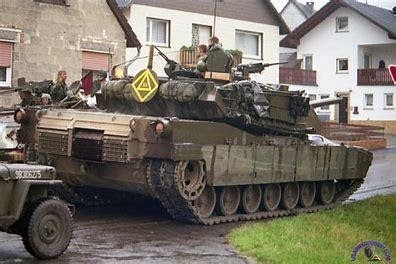 I didn’t have too look far to find what I needed to accomplish this. Battlefront is amazing at providing us with extra pieces of kit to customize our forces and make them not simply markers on the table but our own private armies to command. Looking at most sprues you’ll find extra pieces, boxes, road wheels, guns and such, all ripe for the picking and enabling us to make our toy tanks individual and our own.
I didn’t have too look far to find what I needed to accomplish this. Battlefront is amazing at providing us with extra pieces of kit to customize our forces and make them not simply markers on the table but our own private armies to command. Looking at most sprues you’ll find extra pieces, boxes, road wheels, guns and such, all ripe for the picking and enabling us to make our toy tanks individual and our own.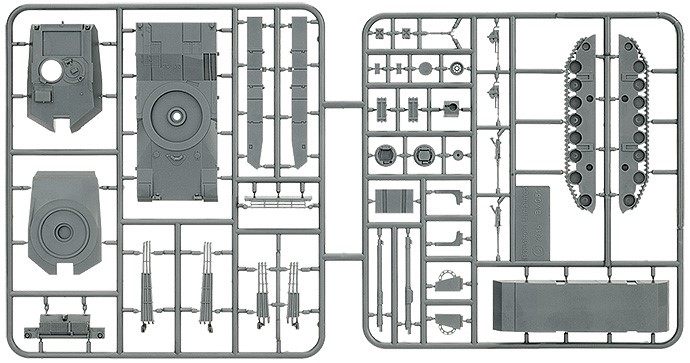
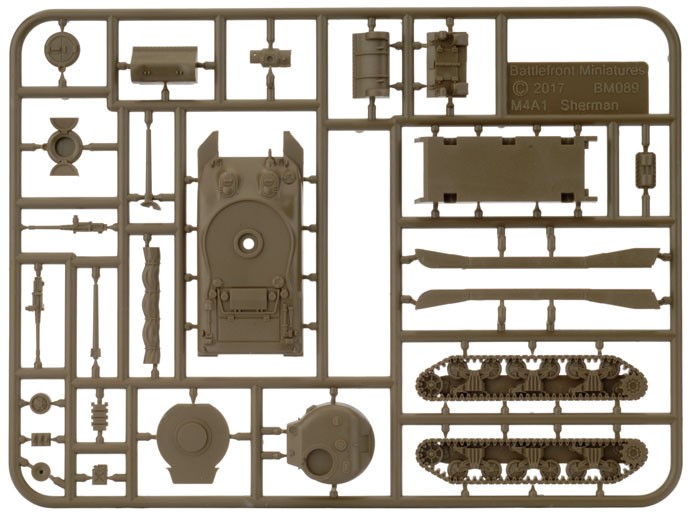
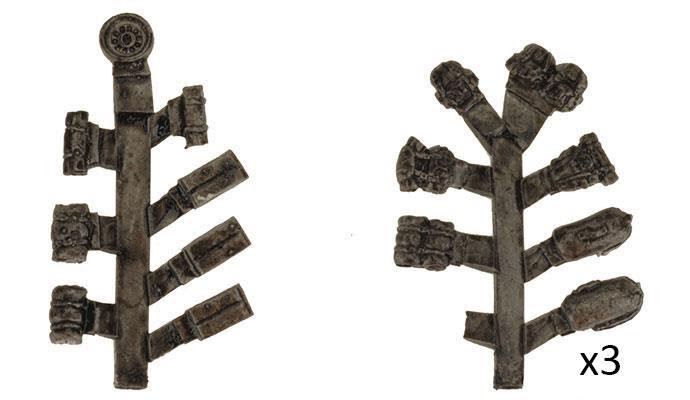


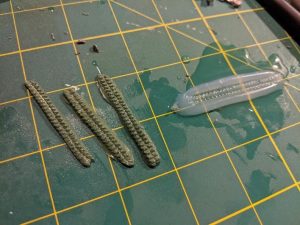
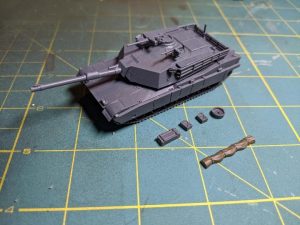
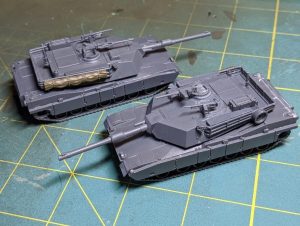
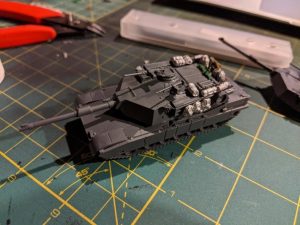

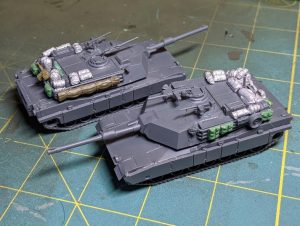


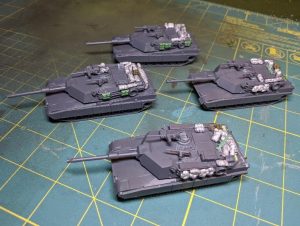
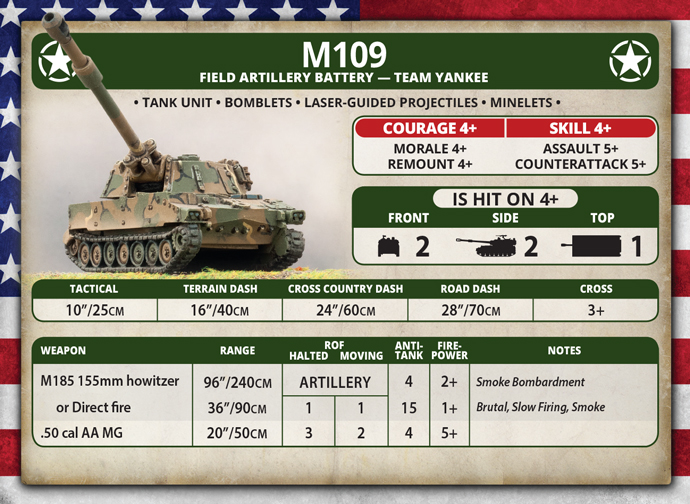
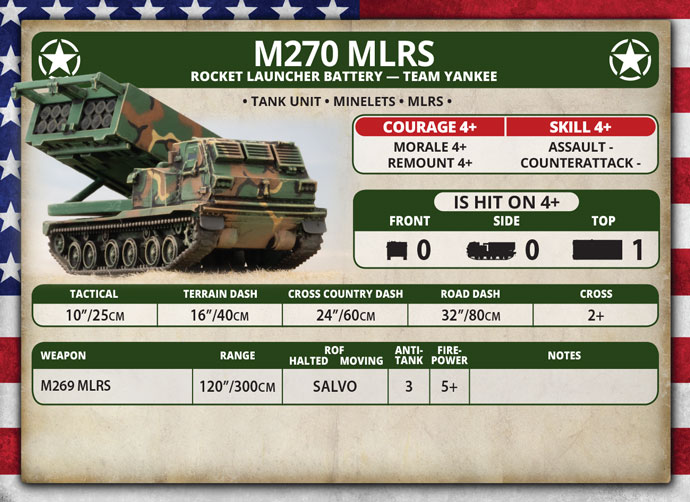 The M270 MLRS is the new big fire support option for U.S. forces. While it came out with Team Yankee British, the MLRS is going to be available for the British, American and German forces. This new artillery system provides a few things for the American forces in World War Three, not the least of which is a really sweet model. I’m a big fan of the look of MLRS systems and with the armoured cabin and huge rocket bank I was in from the moment it was released.
The M270 MLRS is the new big fire support option for U.S. forces. While it came out with Team Yankee British, the MLRS is going to be available for the British, American and German forces. This new artillery system provides a few things for the American forces in World War Three, not the least of which is a really sweet model. I’m a big fan of the look of MLRS systems and with the armoured cabin and huge rocket bank I was in from the moment it was released.